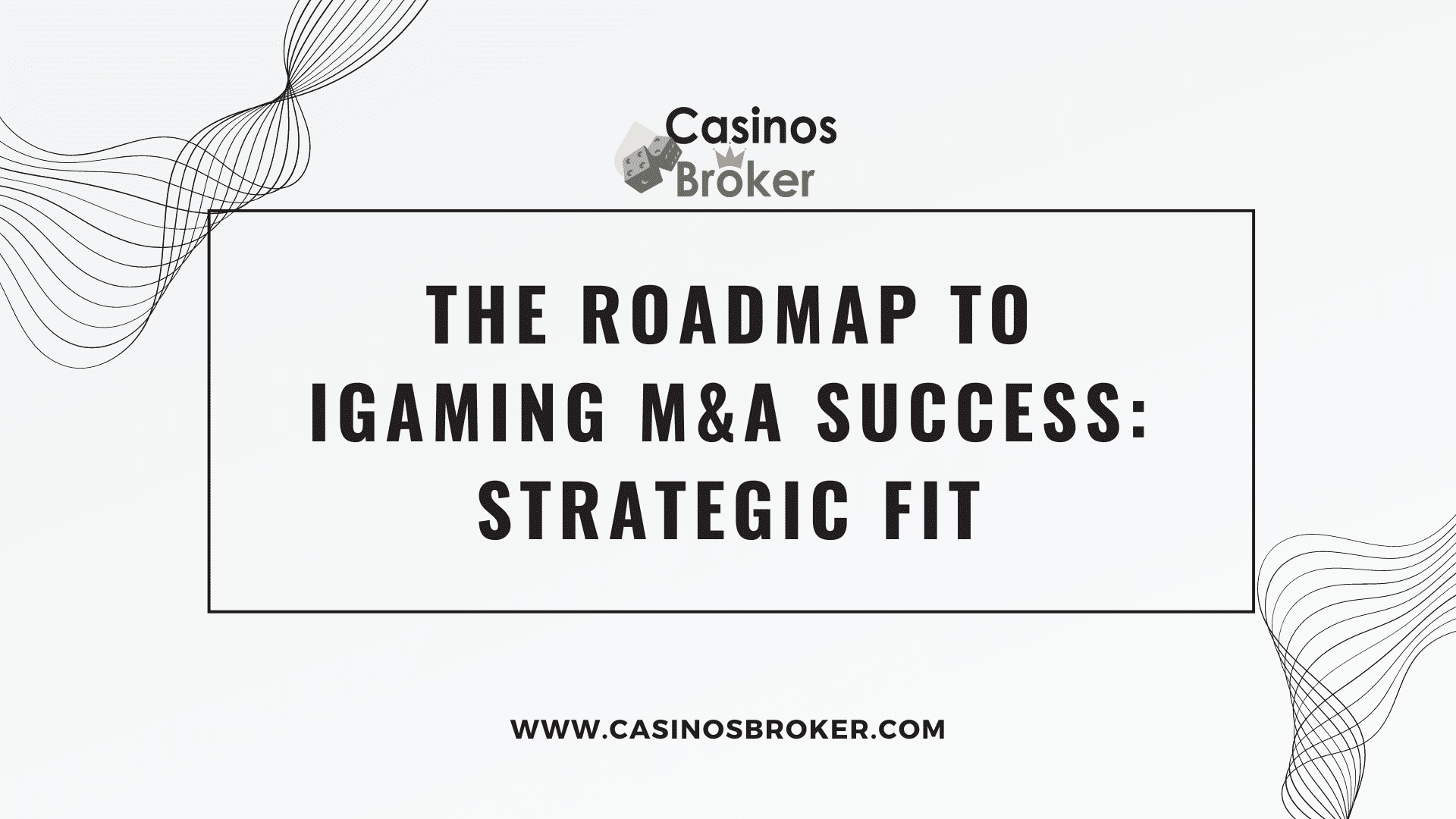The iGaming market is fast-paced, with evolving regulations, disruptive technologies, and shifting consumer preferences creating a dynamic M&A landscape. Yet, in this high-stakes environment, the strategic fit between the acquirer and target firm often determines whether a deal thrives or flounders. Here’s a deep dive into why strategic fit is so vital and how it can be assessed effectively for successful iGaming M&A transactions.
Critical Components of Strategic Fit in iGaming
-
Regulatory Expertise and Market Compliance:
- Navigating the Maze: The regulatory landscape varies wildly across jurisdictions, impacting licensing, KYC (Know Your Customer) standards, responsible gaming protocols, advertising restrictions, and taxation. In-depth knowledge of regulatory trends within target markets is crucial. Can they anticipate regulatory changes that might impact future profitability?
- Proactive vs. Reactive: Does the acquirer have experience preemptively adapting to shifting requirements, or have they fallen prey to fines and operational restrictions because of reactive compliance practices? Ideally, the target enhances (not complicates) regulatory posture within its market segments.
-
Technological Capabilities and Innovation:
- Platform Alignment: Assessing compatibility goes beyond the user interface. Back-end architecture, API usage, security protocols, and scalability must be thoroughly considered. Incompatible systems risk costly re-development post-merger and can slow down integration.
- Future-Proofing: Evaluate the adaptability of tech stacks. Is the target reliant on legacy systems prone to outages and difficult to enhance? Does the acquirer bring expertise in mobile optimization, virtual reality implementations, or emerging technology trends that drive market share?
- Data Advantage: iGaming is powered by data analytics and personalization. Assessing player segmentation capabilities, CRM tools, churn prediction models, and fraud detection reveals both competitive advantage and areas ripe for improvement through combined resources.
-
Product/Service Alignment & Expansion:
- Beyond ‘Check Marks’: Superficial compatibility can be misleading. Are both platforms known for quality and engagement? A sportsbook strong in pre-match markets might benefit greatly from partnering with a well-reputed live betting provider. Analyzing strengths and weaknesses within each category offers the most insights.
- Depth vs. Breadth: A wider portfolio isn’t automatically better. Acquirers must avoid the trap of excessive dilution by prioritizing targets complementing their core expertise. Expanding into adjacent offerings (e.g., iLottery, bingo) is more successful when the acquirer understands player dynamics within that niche.
- Customer Acquisition and Retention: Do the acquirer and target use similar acquisition channels (affiliate marketing, paid advertising, etc.)? Can optimization lead to lower costs? Aligning on retention philosophy is critical; a target built on unsustainable bonus models clashes with a company focused on organic, long-term loyalty.
-
Geographical Reach and Localization:
- Cultural Nuances: Localization extends far beyond language translation. Understanding player preferences for game themes, promotions, deposit methods, and even support style are nuanced but crucial. A target successful in Northern Europe might have little traction in emerging Latin American markets due to mismatched player expectations.
- Competitive Landscape: A target offering market access without insight into that region’s competitor dynamics leads to blind expansion. Assess local market shares, dominant brands, and gaps the merged entity could exploit.
-
Corporate Culture and Talent:
- Decision-Making Styles: Does the target exhibit a similar level of risk tolerance? Do they prioritize data-driven decision-making vs relying on gut feel? Contrasting decision styles breed inefficiency and frustration.
- The Change Factor: Mergers induce change. Is the target adaptable and innovation-driven, or resistant to disruption? Assessing how change gets embraced or rejected reveals whether integration will be a struggle or a seamless evolution.
- People are Key Assets: iGaming relies on specialized talent. Identify critical technical teams, content creators, customer support staff, and individuals instrumental to the target’s success. How can a merger retain them and maximize their contributions? Loss of top talent risks the very value an acquisition promises.
Harnessing Strategic Fit for iGaming M&A Success: A Roadmap
Companies that meticulously assess strategic fit are far more likely to achieve the ambitious goals driving iGaming mergers and acquisitions. Below is a breakdown of these key benefits, demonstrating how a strategically compatible transaction fuels lasting success:
| Strategic Fit Outcome | iGaming M&A Benefits |
|---|---|
| Accelerated Growth | Penetration into new markets, ability to cross-sell to a wider customer base, and the reduction of operational redundancies through a seamless merger. |
| Improved Operating Margins | Consolidation of technology infrastructure, reduced licensing and compliance expenses, streamlined product development efforts, and optimized marketing expenditures. |
| Innovation Fueled Competitiveness | Combining specialized strengths to boost data analysis, accelerate the R&D cycle, and deliver product breakthroughs that capture market attention. |
| Stronger Brand Power | Increased positive brand visibility, stronger market influence through a unified marketing strategy, and opportunities to enhance reputation through cross-branding of compatible profiles. |
| Increased Market Share | Expanded geographical reach, access to targeted customer segments, and the power to acquire new players across markets through a wider offering of compelling products and services. |
Key Success Factors:
Beyond these core benefits, companies unlocking the potential of strategic iGaming M&A consistently practice the following:
- A Defined Vision: Acquirers must hold a crystal-clear understanding of their growth ambitions and identify targets that will bolster strategy execution. Strategic fit should guide them from initial target assessment through negotiation stages.
- Pre and Post-Deal Integration Plan: Successful M&A demands more than financial analysis. An emphasis on the merging of talent, systems, and operational frameworks must exist before and continue seamlessly after the transaction. This prevents disruption and keeps organizational focus on critical business objectives.
- Culture as a Deal-Breaker: A merger may boast ‘perfect’ strategic compatibility on paper, but crumble due to dissonant business cultures. Smart organizations recognize and address these potential compatibility gaps early. Doing so increases the potential for long-term integration success and a truly harmonious alignment of teams.
Why Strategic Fit Can’t Be a One-Time Analysis
The iGaming market, while offering tremendous growth potential, operates in a state of constant evolution. M&A decisions based on static “snapshots” of strategic alignment often stumble long-term, as several factors impact a company’s compatibility with its market needs over time. Here’s why a dynamic approach to strategic fit is a necessity:
-
Shifting Regulatory Landscapes: Laws, licensing requirements, and taxation related to online gambling differ wildly across jurisdictions. What seems like a strategically beneficial move to enter a specific market today can become a legal burden as regulations shift. Maintaining up-to-date knowledge of regulatory trends and being proactive about their potential impact on strategic goals is essential.
-
Emerging Technologies: Disruptive technologies like blockchain, VR/AR, and advanced AI personalization reshape the player experience expectations at breakneck speed. An organization might acquire a platform known for its strong mobile presence, only to find its competitor rapidly innovating in virtual reality spaces. Periodic re-assessment of a company’s own innovation needs and the market’s technological appetite becomes a requirement for sustained relevance.
-
Changing Consumer Preferences: iGaming customers aren’t a homogenous demographic. Preferences for different games, bet types, bonuses, and the overall user experience evolve. Merged companies relying on “what worked yesterday” fall out of step with shifting market preferences. Monitoring emerging trends in player behavior and adjusting the offered gaming portfolio (which might mean further acquisitions or internal development shifts) remains critical.
-
Competitive Landscape: Today’s emerging brand might be tomorrow’s dominant player. New contenders enter the market, incumbents form unexpected partnerships, and niche brands suddenly capture sizable market share. Staying aware of market movements helps identify future synergy opportunities, potential new threat vectors, and reveals when rethinking one’s own strategic position is necessary.
Ongoing Assessment: A Proactive Approach
Successful iGaming companies don’t just focus on pre-merger strategic fit. Here’s how they make this concept an integral part of their business philosophy:
| Factor | Importance |
|---|---|
| Internal Strategic Reviews | Periodically reevaluating a company’s core strengths, areas in need of improvement (tech, new markets, product gaps), and future growth initiatives ensures continuous alignment with overall business goals. |
| Market Tracking | Actively monitoring regulatory changes, new technology adoption rates, competitor moves, and shifts in player preferences through comprehensive market research provides critical real-time data. |
| Openness to Strategic Shifts | Being prepared to pivot or make additional acquisitions in response to identified changes avoids clinging to strategies made irrelevant due to an evolving market |
| Periodic Partner Analysis | Even in an existing, successfully operating merger, regularly reassessing synergy, technology alignment, shared operational philosophy, and cultural cohesion provides early warning signs if misalignment is creeping in. |
Strategic Fit as a Source of Ongoing Value
When treated as an ongoing imperative, strategic fit becomes a constant business intelligence asset. Organizations using this principle as a compass make smarter investment decisions, protect themselves from disruptive surprises, and capitalize on opportunities, remaining in relentless pursuit of their iGaming growth and profitability ambitions.
Please let me know if you’d like specific examples of how shifts in regulations, technology, or consumer preferences dramatically shifted the iGaming landscape in a relatively short period of time!





